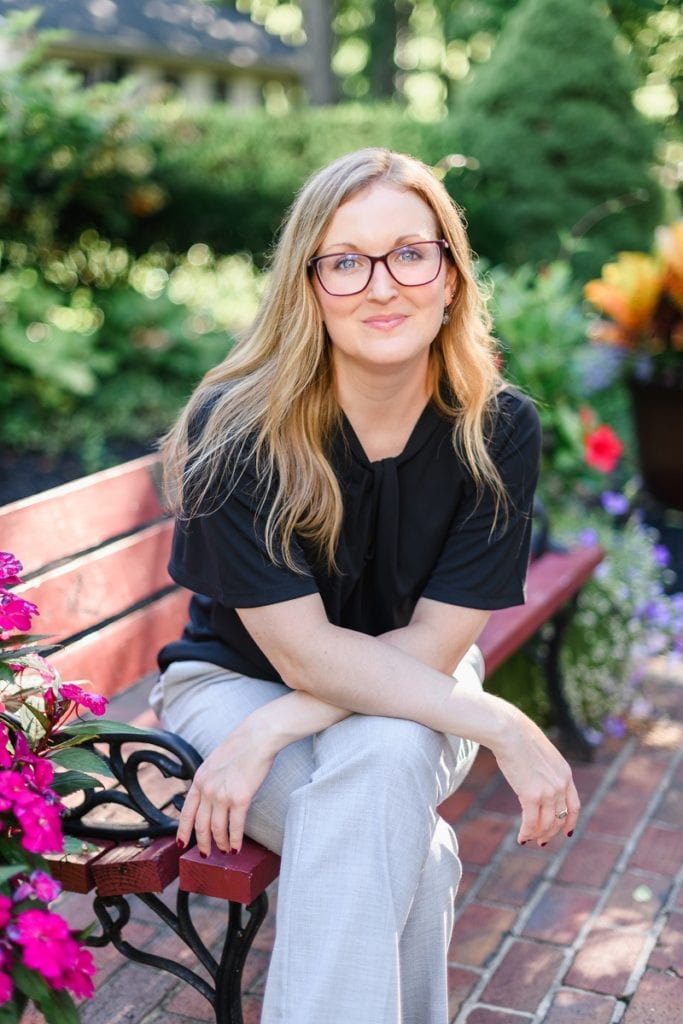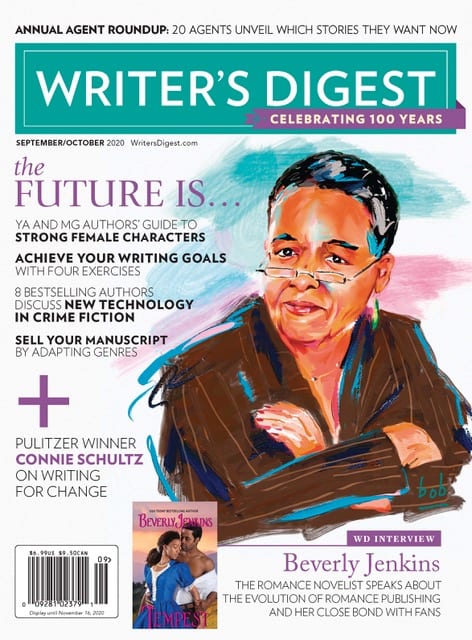|
Getting your Trinity Audio player ready...
|
Writer’s Digest, which has just marked its centenary, has created a community of readers and has prolific brand extensions portfolio, including a university. Current Editor-in-Chief, Amy Jones reveals why the title is so successful – across all of its platforms.
Having recently taken the helm, Amy Jones has been tasked with marking Writer’s Digest’s 100th anniversary this year. Yet despite recent challenges following Covid, a change in ownership and the economic uncertainty, this magazine is thriving.
Its secret is a resilience combined with a genuine desire among the team to inspire, educate and connect writers, as cited in the Writer’s Digest’s media kit. The title has overcome numerous significant threats since being launched in 1920, including two world wars, a depression, many economic downturns and the digital disruption era.
Despite such threats, Writer’s Digest – now owned by Active Interest Media – has built a loyal print readership, which currently stands at 60,000. With a ratio of 69% female and 31% male, most of its audience are highly educated, affluent Americans, 68% are four-year college graduates and 30% hold a postgraduate degree.
Moreover, it has also developed a blossoming virtual community, boasting a user engagement of more than one million across its online and social media provision.
Building an online community
Creating an engaged community is a big part of this title’s accomplishments, but Amy also attributes the magazine’s success to having an innovative team who are willing to push boundaries.
“It’s about being willing to branch out with our expertise. Some of us have had career goals focussing on print publications, but we have had to branch out by writing online content and developing partnerships with bloggers. We have also developed online courses or webinars,” admits Amy, adding that sometimes this pushed the team out of their comfort zone as it was beyond their skillsets.
“Being flexible and willing to learn new technologies as well as the new ways that people get information is a valuable skill which benefits both our audience and us as a team.”
The online community has become the heart of the magazine’s ethos. Amy attributes this success to Robert Lee Brewer, Writer’s Digest’s resident poetry expert.
“Every week Robert does an online poetry prompt, which he has been doing for the past 10 years. At the start, he didn’t know if anyone would be interested but was shocked when so many responded to his prompts.
Recently Robert created a poem a day challenge on the website to tie in with National Poetry month, which gets hundreds of responses. He replies to all of them. It is this commitment that has helped establish such a strong community of readers – many of whom have developed a real connection with the magazine.

Although not a huge fan of social media in her personal life, Amy recognises its engagement potential and would like to do more, but as with many magazines, finding time is a significant challenge. “One of the things that we could improve on is replying to comments, but there are limited hours in the day. As time goes on, teams get smaller, so you work more efficiently. This leaves less room for some of those personal interactions.”
In the past year, Writer’s Digest’s social media strategy has significantly evolved with the focus shifting towards Instagram as a viable platform, which has resulted in a 14.6k following that continues to grow.
“Writers are on Instagram and are looking for a little bit of inspiration – a quote from a favourite writer to get them through the day.”
As with any online strategy, a continuous evaluation is vital. Amy has a conscious understanding that each platform has its unique requirements. “Those who are going on Twitter are going there for a different reason, to find agents or connect with other writers and find writing advice. Whereas on Instagram, it is more about something that reminds them why they are doing this so they can power through.”
Their most prominent social media platform is Twitter with more than 735,000 followers, followed by Facebook, which has a community of 297,263k, Pinterest with 12,428, then YouTube with 8.83k subscribers.
A sustainable future
Amy’s priority is to ensure readers feel invested in the magazine. “If they know that you are looking at their writing or submissions, then they are going to feel invested in the community as well. So, we’ve tried to build on that in recent issues of the magazine.
“For example, we now run a page From Our Readers at the beginning of every issue. We pose a question across the platform and ask users to reply. Answers can also be published in the magazine – a recent question that was about readers’ writing spaces.”
It is a smart move as it encourages the audience to keep subscribing or buying the magazine. Originality and innovation are critical features of this title – something which accelerated as a result of lockdown. Amy reveals how Cassandra Lipp, WD’s managing editor, took inspiration from museums which recreated a painting only using household items.
“We thought we could do that with books, so Cassandra created a few different covers – then asked our audience to do the same and submit the pictures so that we could share them. They are just fun little games, but I think people like being heard and it makes them feel like a part of the community.”
However, relevant brand extensions have also majorly contributed to building sustainability. According to Amy, the most successful value propositions in the portfolio are the seven writing competitions and Writer’s Digest University. “People are interested in online education – and many of our courses are accessible. We offer intensive workshops where participants can submit their writing and get vital feedback – whether it is a pitch, first chapter or a personal essay. Although our courses vary in price, they are less expensive than an MFA (Master of Fine Arts) which is something not everyone has the funding, time or inclination to achieve.”
Valuable lessons and post-Covid
During my interview with Amy, it becomes clear the most valuable lessons the team have learned is to take risks and be intuitive but not reactive while continuing to evolve in terms of skillsets. There is evidence of her intuitive strategic approach in the radical overhaul of the Writer’s Digest newsletter, which now shifted from being a marketing tool. Instead of selling online courses, subscription or marketing for other companies, the newsletter now focuses on providing content which is valuable and relevant to their audience.
“I think the marketing emphasis affected the readership of the newsletter, so now we have shifted the focus to offering it as an engagement tool by changing our editorial strategy. The newsletter now has a different editorial element for each daily edition – from prompts and motivation, to market information on agents and feature articles from the WD archive.”
Like many publications, Covid has had an impact, and the team have had to make some adjustments. “We have had to combine our September and October issues because of the effects of Covid-19. In the future, Writer’s Digest could go down to six issues instead of eight.”
But she is quick to point out they will make up for it with a higher page count and better paper quality. “I think that our readership is sufficiently invested in the print edition to enable us to keep producing that for them.”
So how will Writer’s Digest evolve in the next five years? According to Amy the core mission – to provide great writing instruction – will remain the same but reveals the team may have to focus even more on the online presence – whether that is the website, the online courses or podcasts.
From my perspective
It is surprising to me that Writer’s Digest doesn’t offer readers a combined digital and print subscription package, which I feel is an oversight as subscribers want flexibility with regards to when and how they read an edition.
That aside, there is a strong ethos to achieve a uniqueness that resonates with their audience. Is this the magic ingredient lacking in UK titles? Perhaps. Many teams are becoming burnt out with their ever-increasing workloads, so isn’t it time UK publishers focussed less on efficiency and more on people. We must celebrate the individuality of specialist titles and the editorial teams that create them instead of continually pushing the bottom line.




